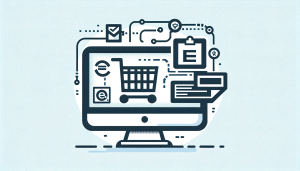6.3 Digitization of Procurement
The traditional Purchase to Pay (P2P) process, foundational to many businesses, is fraught with challenges:
- Manual Processes: Traditional P2P often involves manual data entry, leading to potential errors and inefficiencies. Such errors can result in wrong materials being ordered or even the right materials but in incorrect quantities.
- Delayed Transactions: Physical document exchanges can cause delays in order processing and payments. These delays can lead to materials arriving late, disrupting production schedules and potentially leading to missed market opportunities or contractual penalties.
- Limited Visibility: It’s challenging to have real-time visibility into the status of orders, deliveries, and payments. This lack of transparency can result in stockouts, overstocking, or even ordering materials that are already in inventory.
- Data Analysis Difficulties: With data scattered across various physical documents, deriving insights from purchasing data is cumbersome and often inaccurate. This can lead to decisions being made without a clear understanding of the data, resulting in missed savings opportunities, excessive dependence on a particular region or supplier, or even breaches in compliance with regulatory or contractual obligations.
- Increased Overheads: The manual nature of traditional P2P means that companies often need to employ a larger workforce in departments like accounts payable, leading to higher operational costs.
Digitization offers a solution to most of these challenges, streamlining processes, enhancing visibility, and enabling data-driven decision-making.
The digitization of procurement primarily encompasses two areas:
- E-procurement
- Spend analytics
6.3.1 E-Procurement

E-procurement refers to the electronic management and conduct of procurement activities over the internet. By leveraging technology, e-procurement transforms the traditional P2P process, making it more efficient, transparent, and accurate. Here’s how:
Automated Purchase Requisitions: Instead of manually filling out forms, users can submit requisitions electronically, reducing errors and speeding up approvals.
Electronic Document Exchanges: Purchase orders, invoices, and other essential documents are exchanged electronically, ensuring faster transactions and real-time tracking.
Supplier Portals: Suppliers can update their product catalogs, provide real-time stock availability, and even confirm order receipts through dedicated portals, enhancing communication and collaboration.
Integrated Systems: E-procurement solutions can integrate with other enterprise systems like ERP or inventory management, ensuring seamless data flow and reducing data redundancies.
One standout feature of e-procurement is Catalogue Purchasing. For frequently ordered standard items, digital catalogues are created. These catalogues list items with pre-negotiated rates. Users can directly order from these catalogues, bypassing the detailed P2P process, ensuring adherence to negotiated rates, and speeding up procurement. Initiatives like cataloguing empower purchasing professionals to concentrate on key, expensive, and strategic items, liberating them from the task of managing low-cost and non-strategic items. For procurement professionals to truly excel, driving such automation initiatives and maintaining a high level of focus on strategic items is paramount.
6.3.2 Spend Analytics

Spend analytics involves collecting, cleansing, classifying, and analyzing expenditure data to reduce costs, improve efficiency, and monitor compliance. With digitized procurement data, businesses can derive actionable insights from their spending patterns, driving strategic decisions and fostering continuous improvement in procurement operations. Possible applications for e-procurement include:
- Identify Savings Opportunities: By analyzing purchase data, companies can identify suppliers with whom they have significant leverage and can negotiate better terms or bulk discounts.
- Monitor Supplier Performance: Data can reveal suppliers who frequently delay deliveries or whose products have higher defect rates.
- Forecast Spend: By analyzing past spending patterns, businesses can forecast future expenditure, aiding in budgeting and financial planning.
- Ensure Compliance: Ensure that purchases adhere to company policies and negotiated contract terms.
In essence, while e-procurement streamlines and optimizes the procurement process, spend analytics ensures that the data generated from these processes is put to use, driving strategic decisions and fostering continuous improvement in procurement operations.
